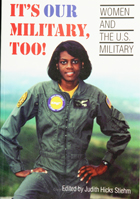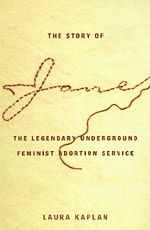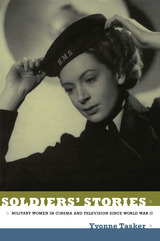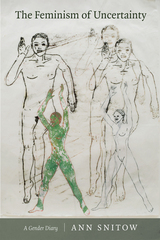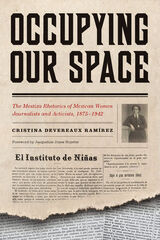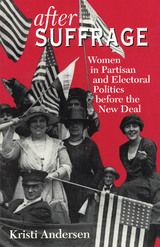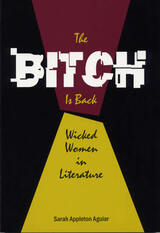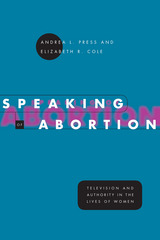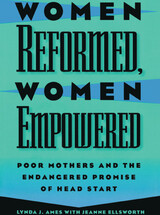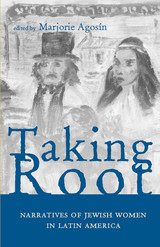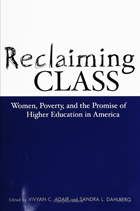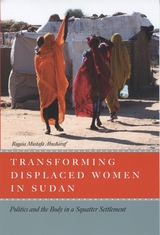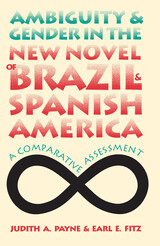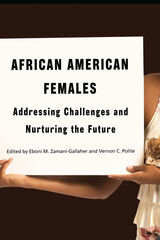Women's IssuesCollection by Cassandra Verhaegen (15 items)Female voices on the challenges of being a woman in both the past and present. Includes the following tags:
1943-, Abortion, African American women, Agosin, Marjorie, Armed Forces, Authority, Body, Cinema, Education (Higher), Empowered, English-speaking countries, Feminism, Feminism and literature, Feminist, Feminists, Good and evil in literature, Head Start, Head Start Program (U.S.), Health and hygiene, Human body in motion pictures, Internally displaced persons, Jewish women, Magic, Narratives, New Deal, Nurturing, Polite, Vernon C., Poor women, Poverty, Promise, Redrobe, Karen, Services for, Sex role in literature, Speaking, Squatter settlements, Squatters, Sudan, Tasker, Yvonne, U . S, Uncertainty, War films, Women and the military, Women in combat, Women in literature, Women in motion pictures, Women journalists, Zamani-Gallaher, Eboni M.
See More
|
It's Our Military Too
by Judith Stiehm
Temple University Press, 1996
In the last twenty-five years the U.S. military has seen the abolition of women's separate corps, the appointment of women generals, and an unprecedented increase in the ratio of women to men. Also, women are now permitted to serve on combat planes and ships. Despite these developments, most civilians know very little about women in the military. This collection includes unusual accounts by women on active duty, retired officers, women who have worked for the armed forces in a civilian capacity, and civilian academics. The book offers insights on a variety of pressing issues including minority women, lesbians, combat, the role of gender in weapons design, and the changing mission of the military. Through personal accounts and commentaries, this book dispels many of the myths about women and the military and explores the reasons for the persistence of misconceptions in the face of increased female participation. This comprehensive effort will be of interest to anyone who wants to know the truth about women in the armed forces and will be a wake-up call to women who feel that the military is irrelevant to them.
1
|
The Story of Jane
by Laura Kaplan
University of Chicago Press, 1997
"In the four years before the Supreme Court's 1973 Roe vs. Wade decision, most women determined to get abortions had to subject themselves to the power of illegal, unregulated abortionists...But a Chicago woman who happened to stumble across a secret organization code-named 'Jane' had an alternative. Laura Kaplan, who joined Jane in 1971, has pieced together the histories of the anonymous (here identified only by pseudonyms), average-sounding women who transformed themselves into outlaws."—Cleveland Plain Dealer "The Story of Jane is a piece of women's history in step with feminist theory demanding that women tell their own stories. It serves to remind people of an important and often overlooked moment in the women's rights movement."—Seattle Weekly "Laura Kaplan's The Story of Jane is the first book to chronicle this controversial sliver of history, and it is a fascinating, if partisan, close-up of the group."—Newsday "[Kaplan] draws on her personal recollections and interviews with Jane members and clients and the doctors who performed the abortions to provide a well-written, detailed history of this radical group."—Publisher's Weekly "Weaving together the voices and memories of her former co-workers, Kaplan recounts how the group initially focused on counseling women and helping them find reliable, reasonably priced doctors....Kaplan's account of this remarkable story recaptures the political idealism of the early '70s...23 years after Roe vs. Wade, the issues and memories raised by the books are close and all too relevant."—K Kaufmann, San Francisco Chronicle "Laura Kaplan's The Story of Jane is the first book to chronicle this controversial sliver of history, and it is a fascinating, if partisan, close-up of the group....The Story of Jane succeeds on the steam of Kaplan's gripping subject and her moving belief in the power of small-scale change."—Cynthia Leive, New York Newsday "During the four years before the Supreme Court's Roe v. Wade decision legalized abortion in 1973, the 100 members of Jane helped some 11,000 women end their pregnancies....There is more in this remarkable book that will further raise eyebrows....Kaplan's engrossing tales of the quiet courage of the women who risked their reputations and freedom to help others may remind many readers of other kinds of outlaws who have resisted tyranny throughout history."—Chicago Sun-Times
2
|
Vanishing Women
by Karen Redrobe
Duke University Press, 2003
With the help of mirrors, trap doors, elevators, photographs, and film, women vanish and return in increasingly spectacular ways throughout the nineteenth and twentieth centuries. Karen Beckman tracks the proliferation of this elusive figure, the vanishing woman, from her genesis in Victorian stage magic through her development in conjunction with photography and film. Beckman reveals how these new visual technologies projected their anxieties about insubstantiality and reproducibility onto the female body, producing an image of "woman" as utterly unstable and constantly prone to disappearance. Drawing on cinema studies and psychoanalysis as well as the histories of magic, spiritualism, and photography, Beckman looks at particular instances of female vanishing at specific historical moments—in Victorian magic’s obsessive manipulation of female and colonized bodies, spiritualist photography’s search to capture traces of ghosts, the comings and goings of bodies in early cinema, and Bette Davis’s multiple roles as a fading female star. As Beckman places the vanishing woman in the context of feminism’s discussion of spectacle and subjectivity, she explores not only the problems, but also the political utility of this obstinate figure who hovers endlessly between visible and invisible worlds. Through her readings, Beckman argues that the visibly vanishing woman repeatedly signals the lurking presence of less immediately perceptible psychic and physical erasures, and she contends that this enigmatic figure, so ubiquitous in late-nineteenth- and twentieth-century culture, provides a new space through which to consider the relationships between visibility, gender, and agency.
3
|
Soldiers' Stories
by Yvonne Tasker
Duke University Press, 2011
From Skirts Ahoy! to M*A*S*H, Private Benjamin, G.I. Jane, and JAG, films and television shows have grappled with the notion that military women are contradictory figures, unable to be both effective soldiers and appropriately feminine. In Soldiers’ Stories, Yvonne Tasker traces this perceived paradox across genres including musicals, screwball comedies, and action thrillers. She explains how, during the Second World War, women were portrayed as auxiliaries, temporary necessities of “total war.” Later, nursing, with its connotations of feminine care, offered a solution to the “gender problem.” From the 1940s through the 1970s, musicals, romances, and comedies exploited the humorous potential of the gender role reversal that the military woman was taken to represent. Since the 1970s, female soldiers have appeared most often in thrillers and legal and crime dramas, cast as isolated figures, sometimes victimized and sometimes heroic. Soldiers’ Stories is a comprehensive analysis of representations of military women in film and TV since the 1940s. Throughout, Tasker relates female soldiers’ provocative presence to contemporaneous political and cultural debates and to the ways that women’s labor and bodies are understood and valued.
4
|
The Feminism of Uncertainty
by Ann Snitow
Duke University Press, 2015
The Feminism of Uncertainty brings together Ann Snitow’s passionate, provocative dispatches from forty years on the front lines of feminist activism and thought. In such celebrated pieces as "A Gender Diary"—which confronts feminism’s need to embrace, while dismantling, the category of "woman"—Snitow is a virtuoso of paradox. Freely mixing genres in vibrant prose, she considers Angela Carter, Doris Lessing, and Dorothy Dinnerstein and offers self-reflexive accounts of her own organizing, writing, and teaching. Her pieces on international activism, sexuality, motherhood, and the waywardness of political memory all engage feminism’s impossible contradictions—and its utopian hopes.
5
|
Occupying Our Space
by Cristina Devereaux Ramírez
foreword by Jacqueline Jones Royster University of Arizona Press, 2015
Winifred Bryan Horner Outstanding Book Award Winner
Occupying Our Space sheds new light on the contributions of Mexican women journalists and writers during the late nineteenth and early twentieth centuries, marked as the zenith of Mexican journalism. Journalists played a significant role in transforming Mexican social and political life before and after the Revolution (1910–1920), and women were a part of this movement as publishers, writers, public speakers, and political activists. However, their contributions to the broad historical changes associated with the Revolution, as well as the pre- and post-revolutionary eras, are often excluded or overlooked. This book fills a gap in feminine rhetorical history by providing an in-depth look at several important journalists who claimed rhetorical puestos, or public speaking spaces. The book closely examines the writings of Laureana Wright de Kleinhans (1842–1896), Juana Belén Gutiérrez de Mendoza (1875–1942), the political group Las mujeres de Zitácuaro (1900), Hermila Galindo (1896–1954), and others. Grounded in the overarching theoretical lens of mestiza rhetoric, Occupying Our Space considers the ways in which Mexican women journalists negotiated shifting feminine identities and the emerging national politics of the late nineteenth and early twentieth centuries. With full-length Spanish primary documents along with their translations, this scholarship reframes the conversation about the rhetorical and intellectual role women played in the ever-changing political and identity culture in Mexico.
6
|
After Suffrage
by Kristi Andersen
University of Chicago Press, 1996
Debunking conventional wisdom that women had little impact on politics after gaining the vote, Kristi Andersen gives a compelling account of both the accomplishments and disappointments experienced by women in the decade after suffrage. This revisionist history traces how, despite male resistance to women's progress, the entrance of women and of their concerns into the public sphere transformed both the political system and women themselves. Andersen shows how women's participation was based on a conception of women's citizenship as indirect and disinterested. Gaining the right to vote, campaign, and run for office transformed women's citizenship; at the same time, women's independent partisan stance, their focus on social welfare concerns, and their use of new political techniques such as lobbying all helped to redefine politics. This fresh, nuanced analysis of women voters, activists, candidates, and officeholders will interest scholars in political science and women's studies. "In this rich and engaging book, Kristi Anderson presents a convincing argument that woman suffrage deserves greater scrutiny as a social, cultural, and political force in the development of American electoral and party politics."—Jane Junn, Political Science Quarterly "Anderson's innovation in this book is to change the dominant question asked about American women's suffrage. . . . This book offers a much-needed corrective to the conventional conception that the enfranchisement of women had no significant effect on American society."—Inderjeet Parmar, Political Studies "Anderson's book is an excellent treatment . . . and a sterling example of the value of using multiple research methods—also steeped within a deep understanding of context, culture, and historic trends—to explain something as complicated and nuanced as the impact of women's votes after suffrage."—Laura R. Woliver, Journal of Politics
7
|
The Bitch is Back
by Sarah Appleton
Southern Illinois University Press, 2001
Although the “bitch” has always commanded a prominent spot in popular culture—television, movies, art—she virtually disappeared from the work of the second wave of feminist writers in the late 1960s and early 1970s. Now, announces Sarah Appleton Aguiar, the bitch is back, returned once more to cultural center stage in the world of serious literature. Feminist writers such as Mary Gordon and Alice Walker, to name only two, felt obligated to subvert literary misrepresentations of females as dimensionless, to refute preconceptions of objectified characters, and, of paramount importance, to create memorable women full of complexity and character. They wanted to create a subjective reality for their protagonists. And they succeeded admirably. But along the road to subjectivity, that vital woman, empowered with anger, with ruthless survival instincts—the bitch—was banished from the pages of feminist fiction. The village gossips, calculating gold-diggers, merciless backstabbers, sinful sirens, evil stepmothers, deadly daughters, twisted sisters, hags, bags, and crones—all had vanished from the fiction written by women. Ubiquitous in other forms of media, the bitch was noticeably absent from the feminist literary canon. Aguiar, however, points to indications in contemporary culture that the season of the bitch is fast approaching. Contemporary feminist writers and theorists are making substantial reevaluations of the archetypal bitch. Focusing on the traits and the types of guises usually associated with this vital character, Aguiar discusses such characters as Zenia in Margaret Atwood’s The Robber Bride, Ruth Patchett in Fay Weldon’s The Life and Loves of a She-Devil, Sula in Toni Morrison’s Sula, and Ginny in Jane Smiley’s A Thousand Acres.
8
|
Speaking of Abortion
by Andrea L. Press and Elizabeth R. Cole
University of Chicago Press, 1999
Over four years, Andrea Press and Elizabeth Cole watched television with women, visiting city houses, suburban subdivisions, modern condominiums, and public housing projects. They found that television depicts abortion as a problem for the poor and the working classes, and that viewers invariably referred to and abided by class when discussing abortion. Speaking of Abortion is an invaluable resource that allows us to hear how ordinary women discuss one of America's most volatile issues.
9
|
Women Reformed, Women Empowered
by Lynda Ames
Temple University Press, 1996
By chronicling the everyday experiences of women in a rural Head Start program, Lynda J. Ames and Jeanne Ellsworth examine the processes of underprivileged women working to make a better life for themselves and their families. The authors explain that in order to empower its participants, the Head Start program allows many women to work as aides or on advisory boards in order to learn how to impact the structures that constrain their lives. This enables participants to take more control while receiving financial assistance and other opportunities for new social support structures.
See More
Head Start was designed around the assumption that its aim should be to "correct" certain presumed deficits of parents, and many policymakers and participants swear by the program for its capacity to empower and its remarkable success rate. Unfortunately, while empowerment can make women's lives more manageable and more rewarding, many administrators feel that it does not change the immediate structure of poverty. In the search for a program design that provides more accountability, administrators are moving to take more control of local programs, thereby decreasing the mothers' control and threatening the flexibility and the empowerment potential of the program, two key factors that have made Head Start so successful. It is this struggle for control of the women's day-to-day lives and families that Ames and Ellsworth reveal through personal stories. Women Reformed, Women Empowered is not only a testament to the successes of the program, but a story of poor women finding the resources they need, and a call to reevaluate disempowering policies that can drive underprivileged families deeper into apathy and hopelessness.
10
|
Taking Root
by Marjorie Agosin
edited by Marjorie Agosín Ohio University Press, 2002
In Taking Root, Latin American women of Jewish descent, from Mexico to Uruguay, recall their coming of age with Sabbath candles and Hebrew prayers, Ladino songs and merengue music, Queen Esther and the Virgin of Guadalupe. Rich and poor, Sephardi and Ashkenazi, Jewish immigrant families searched for a new home and identity in predominantly Catholic societies. The essays included here examine the religious, economic, social, and political choices these families have made and continue to make as they forge Jewish identities in the New World. Marjorie Agosín has gathered narratives and testimonies that reveal the immense diversity of Latin American Jewish experience. These essays, based on first- and second-generation immigrant experience, describe differing points of view and levels of involvement in Jewish tradition. In Taking Root, Agosín presents us with a contemporary and vivid account of the Jewish experience in Latin America. Taking Root documents the sadness of exile and loss but also a fierce determination to maintain Jewish traditions. This is Jewish history but it is also part of the untold history of Brazil, Argentina, El Salvador, Ecuador, Chile, Peru, and all of Latin America.
11
|
Reclaiming Class
by Vivyan Adair
contributions by Sandra Dahlberg Temple University Press, 2003
Reclaiming Class offers essays written by women who changed their lives through the pathway of higher education. Collected, they offer a powerful testimony of the importance of higher learning, as well as a critique of the programs designed to alleviate poverty and educational disparity. The contributors explore the ideologies of welfare and American meritocracy that promise hope and autonomy on the one hand, while also perpetuating economic obstacles and indebtedness on the other. Divided into the three sections, Reclaiming Class assesses the psychological, familial, and economic intersections of poverty and the educational process. In the first section, women who left poverty through higher education recall their negotiating the paths of college life to show how their experiences reveal the hidden paradoxes of education. Section two presents first person narratives of students whose lives are shaped by their roles as poor mothers, guardian siblings, and daughters, as well as the ways that race interacts with their poverty. Chapters exploring financial aid and welfare policy, battery and abuse, and the social constructions of the poor woman finish the book. Offering a comprehensive picture of how poor women access all levels of private and public institutions to achieve against great odds, Reclaiming Class shows the workings of higher learning from the vantage point of those most subject to the vicissitudes of policy and reform agendas.
12
|
Transforming Displaced Women in Sudan
by Rogaia Mustafa Abusharaf
University of Chicago Press, 2009
Over twenty years of civil war in predominantly Christian Southern Sudan has forced countless people from their homes. Transforming Displaced Women in Sudan examines the lives of women who have forged a new community in a shantytown on the outskirts of Khartoum, the largely Muslim, heavily Arabized capital in the north of the country. Sudanese-born anthropologist Rogaia Mustafa Abusharaf delivers a rich ethnography of this squatter settlement based on personal interviews with displaced women and careful observation of the various strategies they adopt to reconstruct their lives and livelihoods. Her findings debunk the myth that these settlements are utterly abject, and instead she discovers a dynamic culture where many women play an active role in fighting for peace and social change. Abusharaf also examines the way women’s bodies are politicized by their displacement, analyzing issues such as religious conversion, marriage, and female circumcision. An urgent dispatch from the ongoing humanitarian crisis in northeastern Africa, Transforming Displaced Women in Sudan will be essential for anyone concerned with the interrelated consequences of war, forced migration, and gender inequality.
13
|
Ambiguity and Gender in the New Novel of Brazil and Spanish America
by Judith A. Payne and Earl E. Fitz
University of Iowa Press, 1993
In this first book-length study to compare the "new novels" of both Spanish America and Brazil, the authors deftly examine the differing perceptions of ambiguity as they apply to questions of gender and the participation of females and males in the establishment of Latin American narrative models. Their daring thesis: the Brazilian new novel developed a more radical form than its better-known Spanish-speaking cousin because it had a significantly different approach to the crucial issues of ambiguity and gender and because so many of its major practitioners were women.
As a wise strategy for assessing the canonical new novels from Latin America, the coupling of ambiguity and gender enables Payne and Fitz to discuss how borders--literary, generic, and cultural--are maintained, challenged, or crossed. Their conclusions illuminate the contributions of the new novel in terms of experimental structures and narrative techniques as well as the significant roles of voice, theme, and language. Using Jungian theory and a poststructural optic, the authors also demonstrate how the Latin American new novel faces such universal subjects as myth, time, truth, and reality. Perhaps the most original aspect of their study lies in its analysis of Brazil's strong female tradition. Here, issues such as alternative visions, contrasexuality, self-consciousness, and ontological speculation gain new meaning for the future of the novel in Latin America.
With its comparative approach and its many bilingual quotations, Ambiguity and Gender in the New Novel of Brazil and Spanish America offers an engaging picture of the marked differences between the literary traditions of Portuguese-speaking and Spanish-speaking America and, thus, new insights into the distinctive mindsets of these linguistic cultures.
14
|
African American Females
edited by Eboni M. Zamani-Gallaher and Vernon C. Polite
Michigan State University Press, 2013
African American Females: Addressing Challenges and Nurturing the Future illustrates that across education, health, and other areas of social life, opportunities are stratified along gender as well as race lines. The unequal distribution of wealth, power, and privilege between men and women intersects with race and class to create multiple levels of disadvantage. This book is one result of a unique forum intended to bring into focus the K–12 and postsecondary schooling issues and challenges affecting African American girls and women. Focusing on the historical antecedents of African American female participation and the contemporary context of access and opportunity for black girls and women, the contributors to this collection pay particular attention to the interaction of gender with race/ethnicity, class, age, and health, with the central aim of encouraging thoughtful reading, critical thinking, and informed conversations about the necessity of exploring the lives of African American females. Additionally, the book frames important implications for recommended changes in policy and practice regarding a number of critical matters presently affecting African American females in schools and communities across the state of Michigan and nationwide.
15
|
| Click here to go to the beginning. | |||||||||||||||
